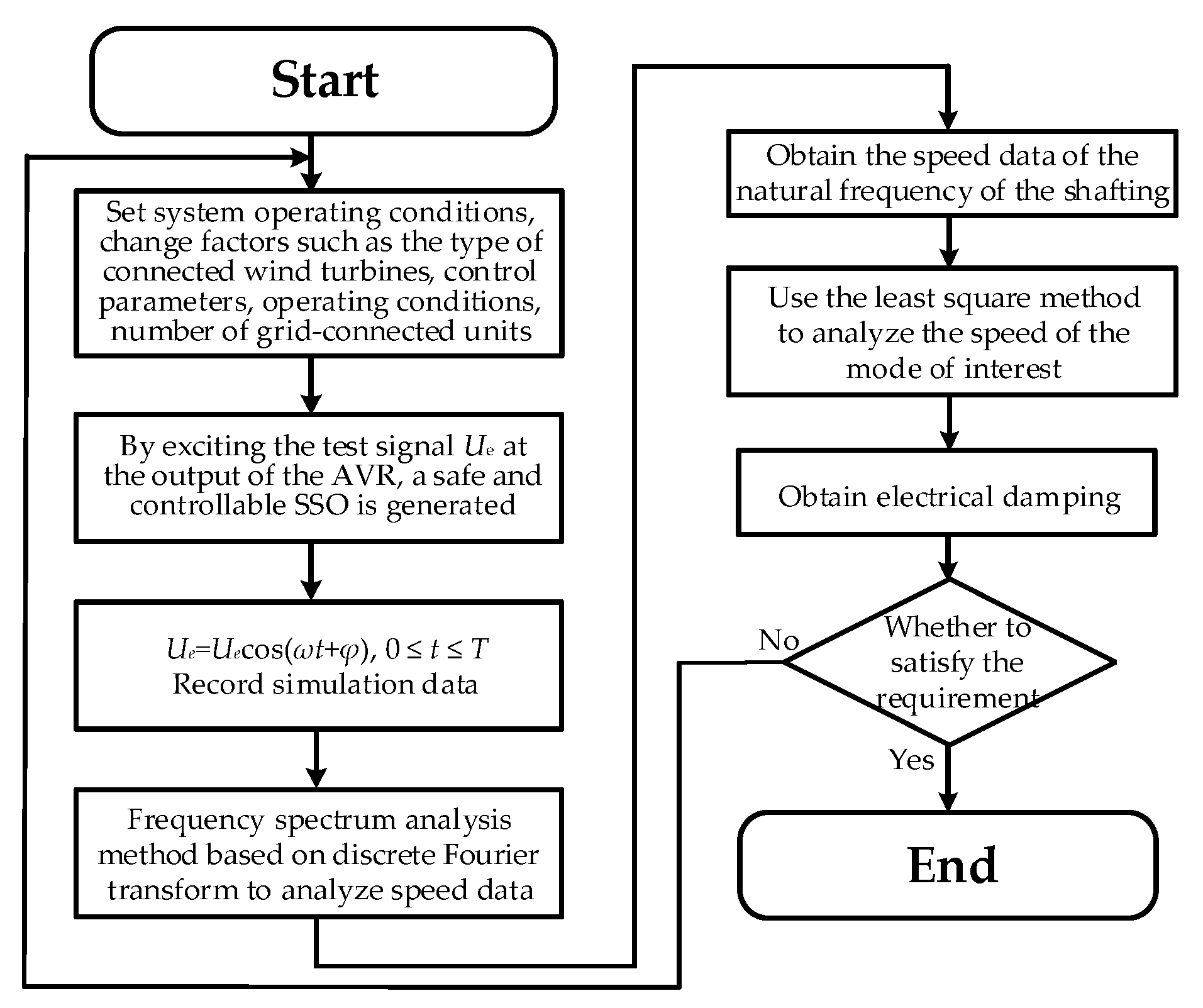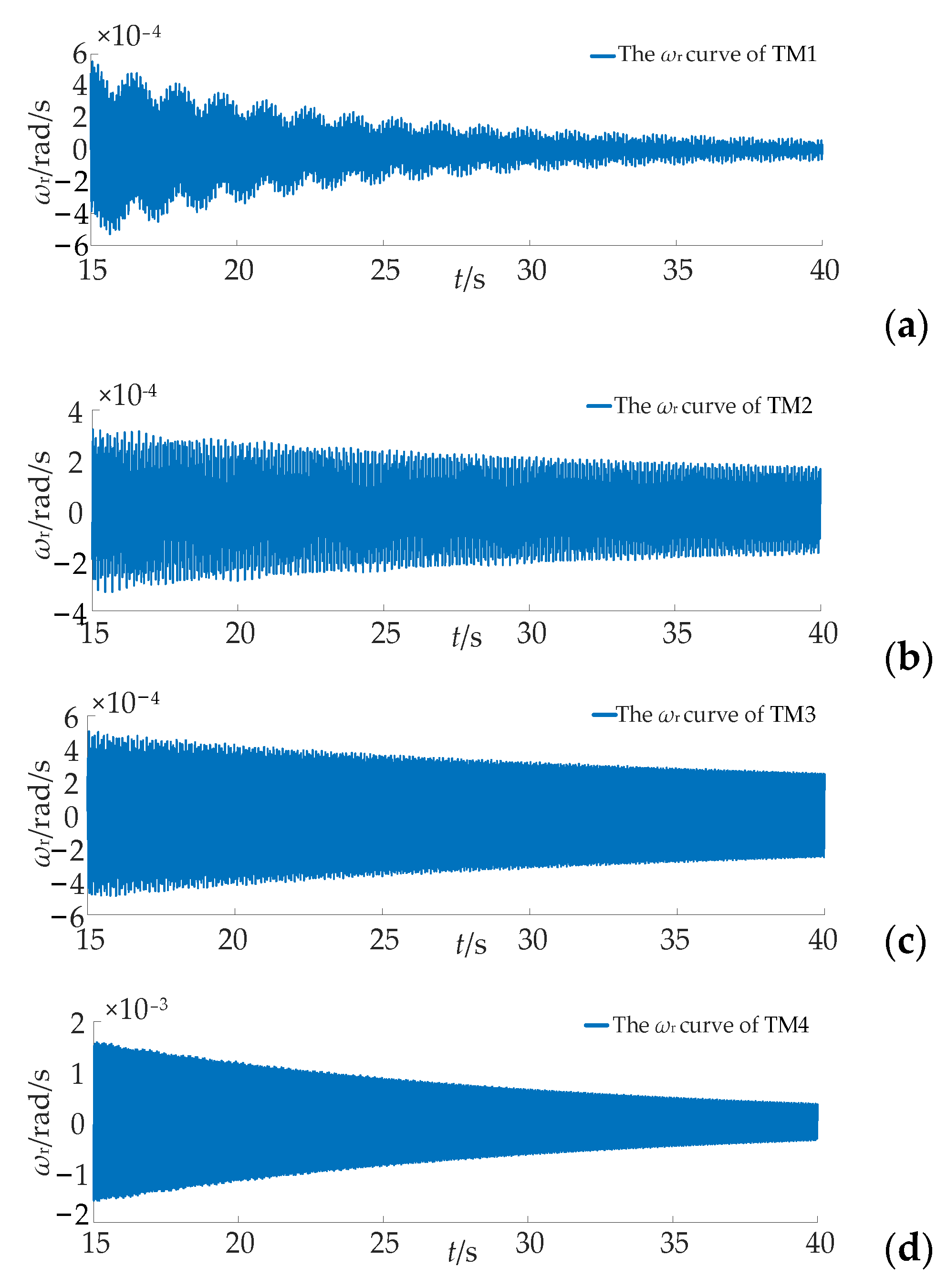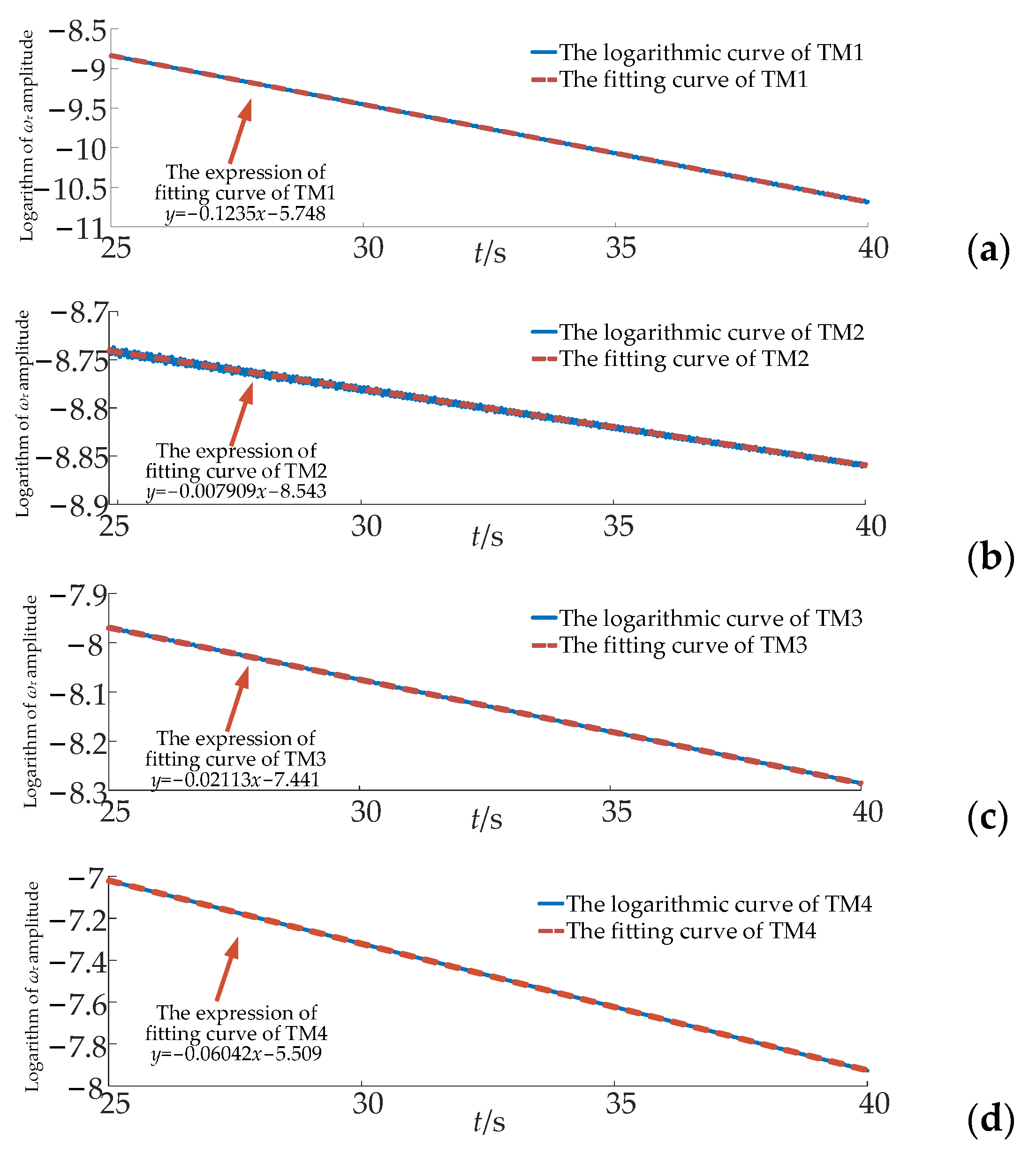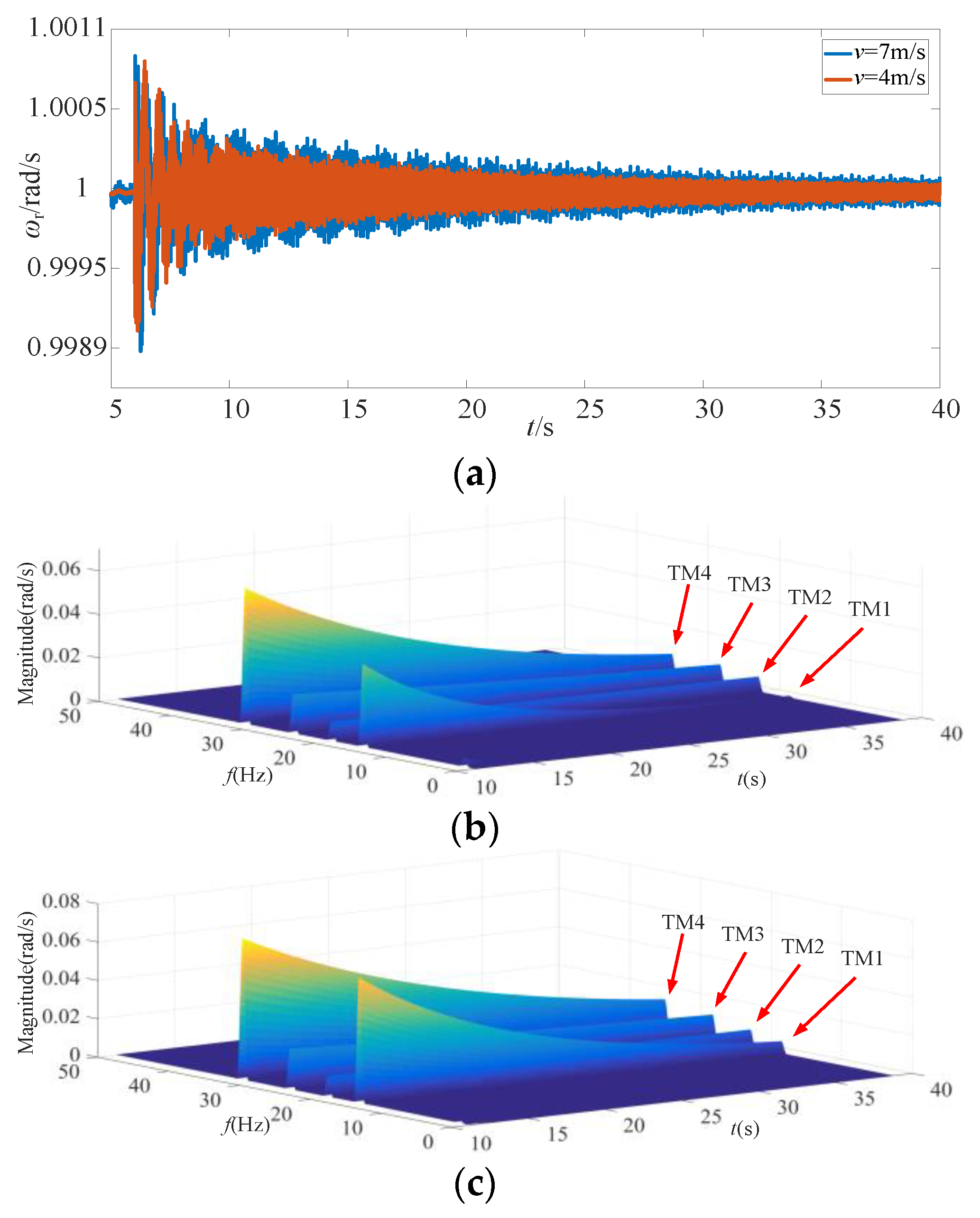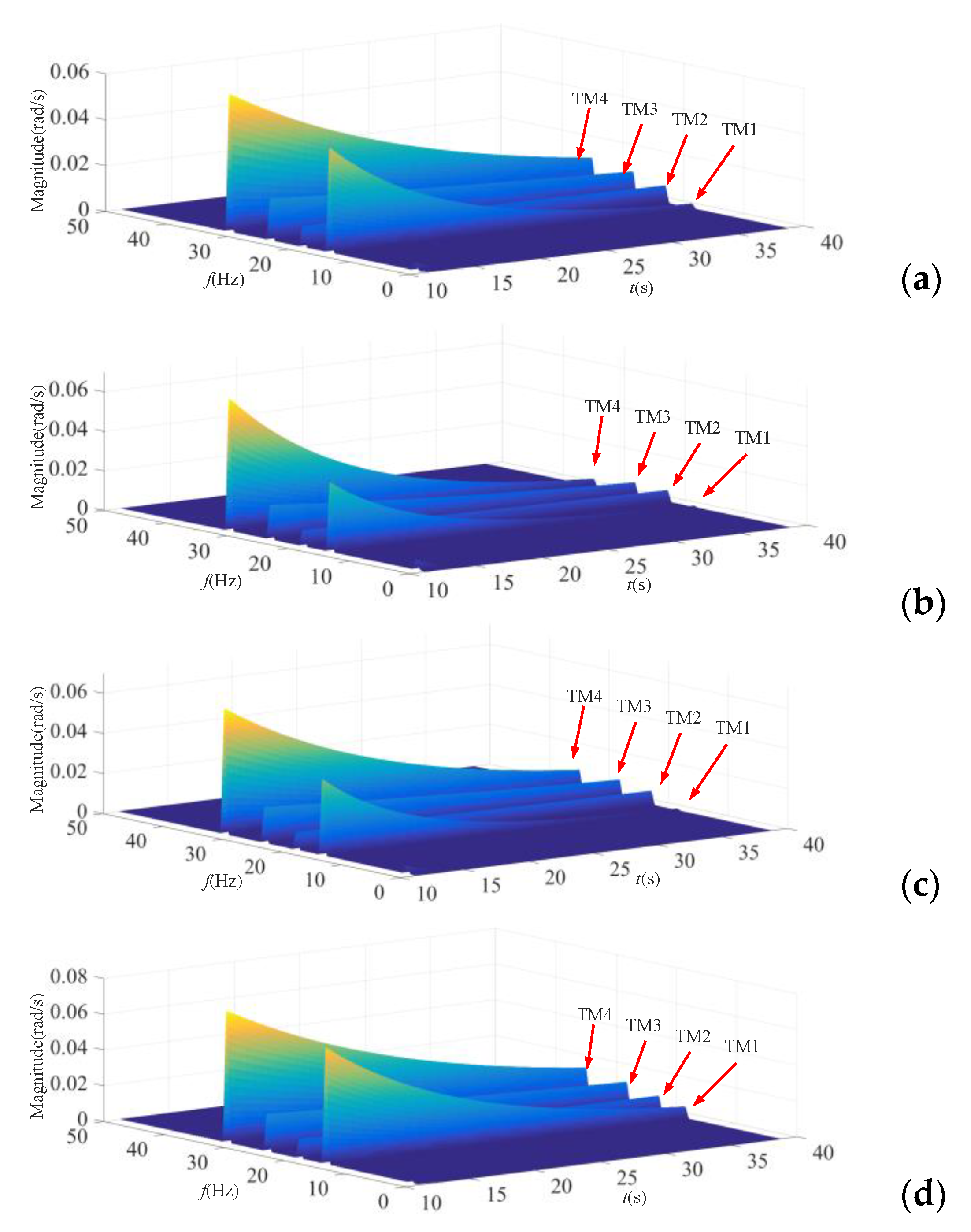1. Introduction
In recent years, developing wind resources vigorously has been an important way of promoting energy transition and meeting the environmental challenges [
1,
2]. In the first half of 2020, China’s new grid-connected installed capacity was 6.32 million MW. By the end of June, the installed capacity of wind power was 217 million kW [
3], and the installed wind power capacity has increased steadily. It is estimated that, by 2050, the installed wind power capacity will reach 2.4 billion kW in China [
4].
Due to the uncoordinated distribution of wind power resources and load development in China, there is a problem of wind power accommodation. Wind power requires large-scale, long-distance, and stable transportation. Thus, the wind–thermal bundled system transmitted via high-voltage direct current (HVDC) is the key means to solve this problem, such as the Lugu HVDC project and Hazheng HVDC project. However, while solving the problem of accommodation, the security and stability of the sending network face hidden risks [
5,
6], example.g., the problem of power oscillation. In July 2015, a subsynchronous oscillation (SSO) occurred in a wind farm in Hami, Xinjiang, China, which caused the shaft torsional oscillation of the synchronous generator (SG) at a distance of 300 km, threatening the safe operation of the system [
7,
8].
Focusing on the power oscillation problem of the sending network, domestic and foreign scholars have investigated the following aspects using the eigenvalue method, complex torque coefficient approach, impedance analysis approach, etc: (1) the problem of SSO in SGs via HVDC transmission [
9,
10,
11]; (2) the SSO of wind turbines transmitted via HVDC [
12,
13,
14,
15]; (3) the SSO of wind–thermal bundled systems transmitted via HVDC [
16,
17,
18].
In the research of SGs via HVDC transmission, [
9] pointed out that the HVDC transmission capacity, strength of grid, and current loop control strategy all affect the torsional vibration of the SG shafting and induce 11.5 Hz negative damping oscillation. The authors of [
10,
11] studied the stability mechanism of SSO caused by HVDC using the complex torque coefficient method, as well as pointed out that the nearby generators can produce SSO negative damping when the bandwidth of the constant current controller on the rectifier side is 10–20 Hz. In terms of wind turbines via HVDC transmission, [
12,
13] used the eigenvalue method and complex torque coefficient approach to study doubly fed induction generator (DFIG) and HVDC system wind farm damping characteristics, showing that their interaction is not obvious. The influence of DFIG controller parameters and wind speed on the torsional mode of SG was evaluated using eigenvalue analysis in [
14]. The results showed that the frequency and damping of the torsional mode increased when the rotor-side converter power outer loop parameter increased from 1 to 5 or the current inner loop control parameter changed from 0.1 to 10; on the other hand, when the wind speed increased from 11 m/s to 15 m/s, the torsional mode first decreased and then increased. The authors of [
15] pointed out that the damping of the SSO increases, and the coupling mechanism was deduced as a function of the dynamic process between voltage and current disturbance at the coupling point, when the proportional coefficient of the permanent magnetic synchronous generator (PMSG) outer loop and HVDC constant current controller increased or the integral coefficient decreased.
The research on the interaction between SGs or wind turbines and HVDC has been relatively complete, but the research on the interaction of wind turbines, SGs, and HVDC is still rare. The oscillation mechanism of the wind–thermal bundled system transmitted via HVDC was evaluated using a time-domain simulation and eigenvalue analysis in [
16,
17], pointing out that the connection of DFIG can alleviate the SSO of SGs caused by HVDC. The authors of [
18] proposed an active disturbance rejection additional damping control using the least square to suppress the shaft torsional vibration of the wind–thermal bundled system effectively transmitted via HVDC. However, the dynamic interaction mechanism among the three has not been fully explained.
In wind–thermal bundled systems transmitted via HVDC, the torsional vibration of the SG caused by grid-connected wind turbines is manifested in the rotor speed oscillation. To be specific, the speed contains abundant electromechanical coupling information. If a certain controllable disturbance is applied to stimulate speed oscillation, we can observe the characteristics of speed response after the disturbance is removed, as well as judge the electromechanical coupling characteristics among wind turbines, HVDC, and SGs, and the contribution of various factors to torsional vibration can be identified.
Unlike previous studies, this paper proposes using the signal injection method to analyze the torsional vibration of a high-proportion wind power system [
19], which involves applying an alternating current (AC) voltage signal on the excitation winding to stimulate speed oscillation. This paper observes the difference of the free response characteristics of the speed disturbance, which is caused by the change in wind turbine scale, and it identifies the coupling mechanism of DFIGs, HVDC, and SG shafting. The main contributions of this paper are as follows:
The linearization models of DFIGs and SGs transmitted via HVDC are established. Thus, the influence of the electromagnetic transient process of wind turbines and HVDC on the electromechanical transient process of SGs is studied. Moreover, this paper reveals the interaction mechanism of the system;
The influences of DFIG control parameters and operating conditions on the damping characteristics of each torsional mode of SGs under the condition of a fixed capacity of HVDC is analyzed on the basis of injection signal identification. Then, the negative damping torsional vibration mechanism of the SG shafting system is identified;
Considering the differences in operation conditions and control parameters of different DFIGs in the wind farm, taking two-machine parallel systems as an example, the influence of DFIGs on the torsional vibration of SG shafting is further expounded.
3. Electromechanical Coupling Characteristics of Equipment
According to the SG linearized model, the electromagnetic torque disturbance Δ
Te can be expressed as shown in Equation (7).
where
ω0 is the SG rotor speed initial value,
ωbase is the reference value of the SG, and
ωbase = 60 Hz.
L1(s) and
L2(s) represent the transfer function relationship between current and flux, and the expressions are denoted in Equation (8).
According to Equation (7), the SG electromagnetic torque disturbance is related to the rotor speed disturbance and voltage disturbance, and the voltage disturbance is correlated with the current disturbance and grid structure. The expression of voltage disturbance is considered as shown in Equation (9).
where
Z11,
Z12,
Z21, and
Z22 are the grid impedance matrix elements, and the current disturbance expression is shown in Equation (10).
Equations (7)–(10) reflect the formation mechanism of SG electromagnetic torque, thus giving the formation mechanism diagram shown in
Figure 3a. The SG speed disturbance is the input signal, and the electromagnetic torque is composed of two branches, of which the first branch is mainly determined by the SG electrical part and the second branch is codetermined by the SG electrical part and the grid. The expressions of
G1(s),
G2(s),
G3(s),
G4(s), and
G5(s) in
Figure 3b are shown in Equation (A1) (
Appendix A).
It can be seen from
Figure 3 that the SG speed disturbance transfer function can be obtained.
When the DFIG and HVDC are connected to the system, the mechanism of interaction with the SG is shown in
Figure 4. It can be seen that the rotor disturbance Δ
ωr of the SG is the input disturbance of the electrical system. The output current disturbance Δ
isdq is formed through the electromagnetic coupling relationship of the electrical part. On the one hand, Δ
isdq directly forms the electromagnetic torque disturbance Δ
Te and acts on the rotor; on the other hand, the terminal voltage disturbance Δ
udq of the SG, wind turbines, and HVDC is formed by the grid coupling. The SG terminal voltage disturbance through its electromagnetic coupling relationship intensifies Δ
Te and Δ
isdq; then, Δ
isdq interacts with the terminal voltage disturbances of wind turbines and HVDC to produce current disturbances Δ
irdq and Δ
ihdq. Furthermore, Δ
irdq and Δ
ihdq are superimposed to continue the grid function and form a new terminal voltage disturbance Δ
udq, which further aggravates Δ
Te until the system rebalances or loses stability.
It can be seen from
Figure 4 that the rotational speed disturbance transfer function among the DFIG, HVDC, and SG is considered as shown in Equation (12).
The above analysis reflects the influence of the electromechanical transient process of power electronic equipment on the electromechanical transient process of current magnetization equipment. The electromechanical coupling process among wind turbines, HVDC, and SGs is revealed from the mechanism. At present, eigenvalue analysis, complex torque analysis, impedance analysis, and the time-domain simulation method are commonly used to analyze system SSO problems. Among them, eigenvalue analysis can obtain the inherent mode of the system and judge the stability of the system at one operating point, but it cannot explain the subsynchronous interaction mechanism clearly. Whether the complex torque analysis is applicable to multimachines and multi-power electronics systems is still inconclusive, and impedance analysis can only determine the stability of the subsystem but not the entire system. The above methods are difficult to ensure calculation accuracy when studying the SSO problem of complex systems including DFIGs, SGs, and HVDC, while the time-domain simulation method can guarantee model integrity and calculation accuracy to the maximum extent. Therefore, this paper studies the influence of various equipment on SG shafting using the identification signal injection method.
6. Conclusions
This paper proposed a torsional vibration analysis method for a system containing HVDC, DFIGs, and SGs, using the additional excitation signal injection method. It revealed the torsional modes of the SG shafting caused by DFIGs connected to the grid. The main conclusions are as follows:
(1) In a typical wind–thermal bundled system transmitted via HVDC, the electromagnetic transient process among wind turbines, SGs, and HVDC influences the electromechanical transient process of the system. There are some factors, such as the types of grid-connected wind turbines, main control parameters, operating conditions, and; the transmission power and control parameters of HVDC that affect the torsional modes of the SG to some extent.
(2) For the DFIG and SG system transmitted via HVDC, under the given HVDC transmission capacity, as the current inner loop control parameters of the RSC of the DFIG decreased (Kp = 10 p.u–1 p.u), the damping characteristics of each torsional mode of the SG decreased; as the operating conditions of the DFIG decreased (v = 7–4 m/s), the damping characteristics of each torsional mode gradually increased. With the increase in mechanical damping coefficient (Dm = 0.05 p.u–2 p.u), the damping of each torsional mode increased, which was beneficial to the stability of the system.







